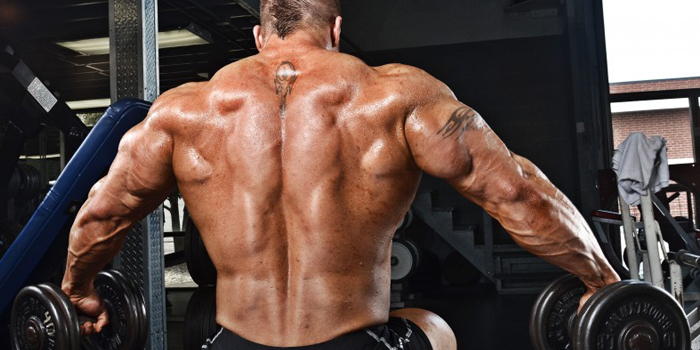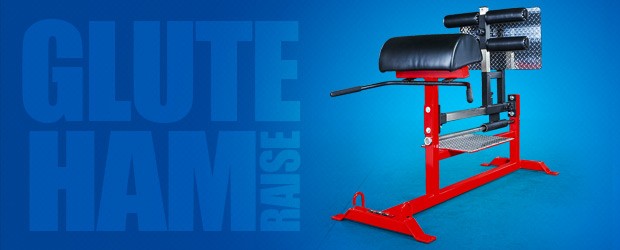
When training the deadlift, how often do you consider that your spinal extensors may be the limiting factor? And beyond that, how often do you directly train them? The spinal erectors are generally assumed to get worked just from deadlifting, but as anyone who has ever used good mornings or the reverse hyperextension to great effect knows, getting the spinal erectors stronger can have a major impact on bringing up your deadlift.
Key Points
- The ability to maintain a neutral spine while deadlifting, or even a reinforced “rounded” spine position, is dependent almost entirely on how strong your spinal erectors are.
- While the glutes are emphasized as the major mover in the deadlift, having underdeveloped spinal erectors will limit your ability to maximize your hip extension. Your back and ass have to match each other.
- The spinal erectors are made up almost entirely of slow twitch fiber. These are the muscles that keep your spine lined up—they are made for endurance. Training them with moderate to high reps and sustained time under tension is the most direct strategy for hypertrophy.
- For those individuals who cannot deadlift heavy, direct extensor work can be an option for strengthening the back, along with the usual rows and vertical pulls.
- For bodybuilders and physique competitors, a well-developed set of spinal extensors can instantly set you apart on the stage.
All that said, how should you go about training them? Read further.
Top 10 Exercises for Direct Spinal Extensor Work
1. Reverse Planks
This movement is an uncommon one but incredibly effective. I’ll credit Jeff Ward of Burn Fitness in Tampa, Florida, for turning me on to this movement. Jeff has had numerous disc issues, and he showed me this movement as a way to develop the back extensors without the sheer forces that deadlifting puts on the spine.
I put this movement as my number one because it is the most universally “friendly” exercise. Any level of trainee can perform this, and it’s shockingly challenging for even an advanced-level lifter. It can be performed bilaterally and unilaterally, and the unilateral version especially will reveal if you have a major strength deficit between your right and left side. The movement is best performed with timed sets, from anywhere between 30 and 90 seconds. For the bilateral version, you can increase the difficulty by placing a weight on the hips. You can do the unilateral version for reps, alternating legs, or timed sets. Be aware, that these will give you a wicked lower back pump.
I suggest two to four sets, done at the end of your deadlift or back day.
2. Reverse Hyperextensions
No list would be complete without this movement. There is no real substitution for a Reverse Hyper®, and try as I might, I’ve never found any exercise that quite replicates a well-designed Reverse Hyper® machine. That said, if you have access to one of these, the sets and reps vary, as does the setup with the strap and changing the leverage of the movement. Beginners may need to start with bodyweight for two to three sets of moderate reps. As you get stronger, you can add load as appropriate.
3. GHR Back Extensions
There are also back extension “machines,” but only the most old school of gyms have them. The GHR works great for this movement, and these can be bodyweight, weighted, or banded, and you can alter the leverage as needed. I’m preferential to higher reps, and “heavy” sets of 10 are about as low as I’ll go for most recreational lifters.
4. 45-Degree Hyperextensions
An old school standby. For some reason, 45-degree back raises seem to have fallen out of favor, but they work very well. They also are always in commercial gyms, which makes it a great tool for those that don’t have the hardcore setup. I prefer starting with higher reps. Two sets of 20-50 with bodyweight is what I’ll have recreational lifters progress to. Putting your hands behind your head increases the difficulty, and resistance can be added with a band or plate. Finnish powerlifters will hold a barbell across the shoulders, which also works very well. The single-leg version is also a great way to address left/right asymmetry.
5. Hatfield Back Extension
I picked this up from CJ Murphy of TPS in Boston. This can be done on the GHR or on a regular exercise bench. The movement is deceptively hard, but it targets the mid-back extensors better than any other. I like these for two to four sets of 8-15 reps. You could add weight to this, but I feel it's best done as a pump movement for reps.
6. Banded Good Mornings
I often use this movement to prepare my novice female clients for deadlifts. Getting their spinal extensors stronger and conditioned makes using the barbell their first time pulling much easier. These can be progressed to however many bands you can reasonably stand on. I’ve gone as high as five sets of 20, but two or three sets of 10-20 reps is more reasonable.
7. Good Mornings (Classic Version)
Some people absolutely hate these, but performed appropriately, the good morning is a great exercise. One tactic I borrowed from Louie Simmons is using good mornings to build the deadlift. I’ve successfully done this with novice clients many times over. Good mornings uniquely condition the back and posterior chain to handle pulling. Two to five sets of 6-10 reps work well. I never have anyone go heavy on these beyond two plates a side, but I also don’t train elite-level powerlifters. There are many different versions with specialty bars and accommodating resistance, but I am keeping this list broadly useable.
8. Good Mornings Off Pins
What do these do over the freestanding good mornings? They emphasize the start of the deadlift position extremely well, and they deload the weight at the most stressful position. I love these, but they tend to be completely screwed up and turned into a “standup squat” by most people. To perform these properly, you set the bar to the height of your torso at the start of the deadlift. It would be akin to setting for a deadlift, then letting go of the bar. Some people may benefit from a lower bar position, but use your deadlift setup as the guide for the pin height. Two to three sets of 6-10 reps are recommended.
9. Snatch Grip Bridge Deadlifts
What the hell are these? I don’t know if I made these up or if maybe someone has been doing them for years, and I just don’t know. Regardless, these are essentially a “wrongly” done stiff leg deadlift, with the bar kept as FAR away from the body as reasonably possible. You drift the bar away, keeping it underneath the shoulder, and you emphasize extending the spine to stand up straight, not the hips. These are NOT meant to be done heavy. Two to three sets of 10-20 reps work great. Done correctly, you feel these from top to bottom in your spinal erectors and traps. Done incorrectly, you will fuck yourself up.
10. Jefferson Curls
Some people may scoff at this as a “mobility” movement, but I experimented with it earlier this year, and all my trainees were shocked at how sore their spinal erectors and mid-back were the next day. These are essentially very slowly performed deficit toe touches, emphasizing curling up the spine, vertebrae by vertebrae, until standing. Doing these heavy is asking for injury. Two to three sets of 8-10 reps with light dumbbells is the sweet spot. These will ruin your life if you have ridiculously tight hamstrings, but you will probably benefit from them.
Header image courtesy of Jeffrey Sygo at www.symiphotography.com
Originally published in January of 2017










4 Comments